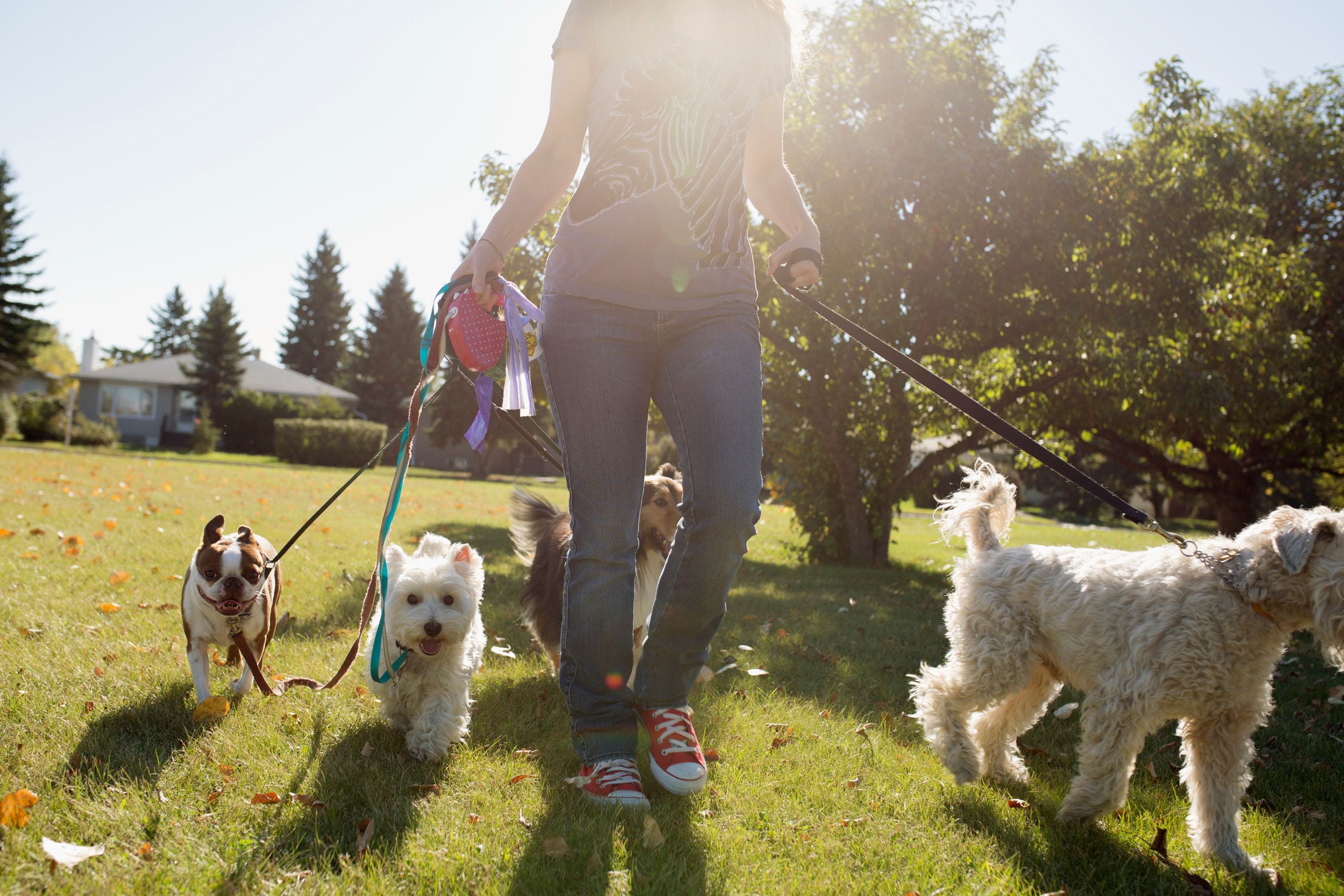After a run with your four-legged buddy or a hike with the dog walker, you notice that he’s limping over to his water bowl. Immediately, a rush of worry sets in and you start asking yourself what could have happened. You might wonder, “Should I rush him to the vet?” It depends on the specific situation, says Dr. Deirdre Chiaramonte, a veterinarian with Assisi Animal Health. So before fighting traffic across town, stop and take a deep breath. There are lots of conditions and injuries that can cause dog limping, and you should understand the problem at hand before taking action.
Why Might Your Dog Be Limping?
Here are five of the most common causes of dog limping:
- Cuts, Sores and Broken Nails
Before getting too worried, you should examine your dog’s feet. Check for any cuts or sores that might be visible on the pads and look between his toes. During this process, you should make sure no pesky thorns or small stones have become lodged in the nooks and crannies of your furry friend’s feet. And don’t forget his nails! Make sure his nails are not too long, as this may cause them to curl back toward his foot pad. It’s also important to make sure that his nails are not cracked or broken.
For more information on how to cut your dog’s nails, check out How to Clip Dog Nails — A Pain-Free and Easy Guide.
- Sprains
Just like you, your dog can end up with a sprain or muscle strain if she trips or takes an awkward step. According to Dr. Chiaramonte, if your dog has a mild limp that resolves on its own within a few days, this usually means that it was caused by a strain or a sprain.
- Hip Dysplasia
If you have a young dog with a persistent limp, “it can be due to certain growing breed-specific orthopedic conditions such as hip or elbow dysplasia,” warns Dr. Chiaramonte. Your dog can develop hip dysplasia when the muscles that normally surround his hip joint become loose and lax. This process allows his leg bone to rub against or even come out of its socket. Though hip dysplasia is more common in some breeds than others, it can truly occur in any dog at any age.
- Knee Problems
You’re not the only one in your family who can have knee problems! Your dog can rupture tendons or injure her patella. “For puppies with a persistent hind limp, the problem is often with the stifle or knee,” says Dr. Chiaramonte. “But this is less common to older dogs.”
- Arthritis
Like people, dogs can develop arthritis in the joints they use most, such as their legs, as they age. “In older dogs, limping stiffness and discomfort is usually related to arthritis,” notes Dr. Chiaramonte. If your dog has arthritis, she may limp most upon rising.
What Should You Do If You See Your Dog Limping?
The best way to handle your dog’s limping depends on the specific issue or event that is causing this behavior. Here are five steps you can take to make your dog more comfortable and ensure that he gets back to tiptop shape as quickly as possible.
- Clean and Bandage Wounds
If your dog has an injured foot pad, you should clean and bandage the wound. However, you may need to take your furry friend to the veterinarian for stitches if her cut is particularly deep. In an effort to prevent your dog from licking the wound or moving the bandage, you might want to consider putting a wound cone (or e-collar) around her neck.
- Give It a Couple of Days
Simple sprains should clear up in a few days. But if your dog’s limping persists, it might be caused by something more serious. As such, “if the lameness lasts longer than a few days with no improvement, it is best to be examined by a veterinarian,” advises Dr. Chiaramonte.
- Install Ramps
For some dogs, jumping up on the bed, walking up and down stairs or even taking the few steps from the porch to the ground can be painful. If you feel this is the case for your furry friend, you should consider installing movable ramps, which will make it easier for her to get around.
- Massage Your Dog
Rubbing your dog’s legs can help bring blood to the area, which speeds up the healing process. But be sure to massage the area gently and watch your dog closely. If he shows any distress or reacts when you touch a specific area, you should avoid that joint.
- Do Not Give Your Dog Medication That Is Intended For People
A dog’s body can’t handle medications that are intended for people, such as anti-inflammatories. In fact, some medications, like those that contain ibuprofen, are actually toxic to dogs. If your dog’s limping is caused by a serious medical concern, your vet can prescribe appropriate medication for him. For instance, there are specific drugs and supplements that can help your dog manage pain and arthritis.
Shellie Braeuner is an award-winning children’s author. She earned an M.Ed from Vanderbilt in human developmental counseling and has worked as a nanny for more than 25 years.
*This article is for general informational purposes only. It is not intended nor implied to be providing medical advice and is not a substitute for such advice. The reader should always consult a health care provider concerning any medical condition or treatment plan. Neither Care.com nor the author assumes any responsibility or liability with respect to use of any information contained herein.





